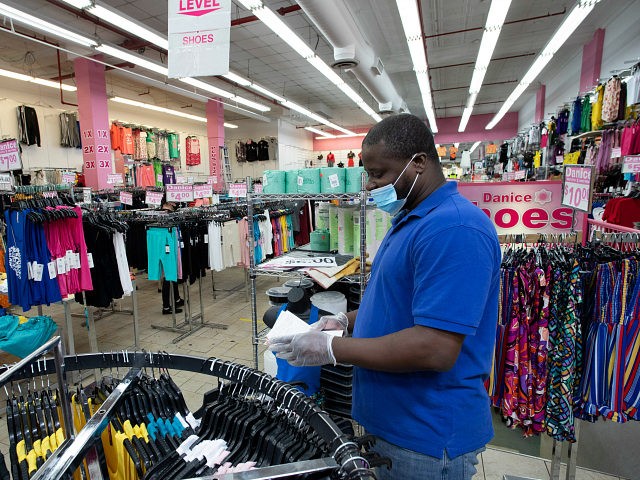New York City, once the epicenter of the ongoing Chinese coronavirus pandemic in the United States, eased its stay-at-home order Monday and began a phased reopening after a nearly three-month lockdown.
“We’re celebrating. We’re back. We’re reopening. We’re excited. Our mojo’s back,” Gov. Andrew Cuomo (D) told reporters on Monday, adding:
Today we are turning the page on the COVID-19 [coronavirus disease] virus as we reopen New York City – we didn’t just flatten the curve, we bent it.
…
We now have the lowest levels [of confirmed infections] in the state since March 16th. … All this progress has been made because of our hard work, and we can’t get sloppy now, or else we’ll see those numbers start to go back up.
NYC’s reopening came amid protests in cities across America, including NYC, following George Floyd’s May 25 death after a now-fired white police officer charged with murder, Derek Chauvin, put his knee on Floyd’s neck for several minutes. Some of the protests devolved into riots.
While calling for a cautious reopening celebration, Gov. Cuomo urged the tens of thousands of Floyd protesters in New York to get tested for COVID-19.
“I’m asking the protesters; please go get a test. It’s free, it’s available,” the governor declared after coming out in support of the demonstrations.
People across dozens of American cities took to the streets to protest the senseless death of Floyd, deemed a homicide by two autopsies.
Despite the ongoing protests in NYC, Mayor Bill De Blasio (D), who also came out in support of the demonstrations, said large events are still banned.
“That’s hard to achieve if we’re really going to keep a lid on this disease,” he declared on Monday, referring to resuming large events of over ten people.
Cuomo issued a statewide stay-at-home order 80 days ago on March 20. New York confirmed the first case of the virus on March 1.
Under phase one of reopening in New York, construction projects can resume, manufacturers can open their floors up again, and non-essential retailers can provide curbside pickup service.
On Sunday, the New York Times reported:
As many as 400,000 workers could begin returning to construction jobs [on Monday], manufacturing sites and retail stores in the city’s first phase of reopening— a surge of normalcy that seemed almost inconceivable several weeks ago, when the city’s hospitals were at a breaking point, and as many as 800 people were dying from Covid-19 on a single day.
Many retail stores, battered by months of closure, are readying to do business again on Monday, starting with curbside and in-store pickup.
Despite being allowed to reopen, some businesses may not be able to do so due to damage from the recent riots. Some of the Floyd protests descended into riots. Some stores remain boarded up as NYC reopens.
On Monday, Cuomo noted that the number of hospitalizations, considered a useful metric of the severity of the coronavirus outbreak, came down to 702 across New York in recent days from a record-high of 18,825 during the peak of the pandemic.
As of Monday, the coronavirus had infected more than 204,000 NYC residents and killed about 22,000, including 4,700 deaths deemed as “probable’ coronavirus-linked fatalities, the city’s government reported.
Echoing other city governments, New York officials have warned that the mass gatherings over Floyd’s death could fuel the rapid spread of COVID-19, the disease caused by the coronavirus.
Cuomo acknowledged that New York City could see a spike in cases after more people go out following Monday’s reopening.
Nevertheless, he noted that if New Yorkers “stay smart,” the state would continue with its plans to revive “non-essential” businesses.
The governor proclaimed that all New York residents, particularly those who use mass transit, must wear masks and try to practice social distancing.
He said the city would distribute hand sanitizer to those who use public transportation, adding that mass transit personnel are disinfecting the trains.
While some people wore masks during the Floyd demonstrations, the vast majority ignored social distancing.
However, the Democrat-allied mainstream media is pushing the narrative that not protesting could be more detrimental to the health of minorities who are already disproportionally impacted by COVID-19.
During the anti-lockdown protests, the left-leaning media accused participants of being careless.
Compared to the rest of the state, which already moved to phase two of reopening, New York City is way behind.
Phase two could be just weeks away for New York City unless the protests prompt an increase of cases as predicted by some health experts.

COMMENTS
Please let us know if you're having issues with commenting.